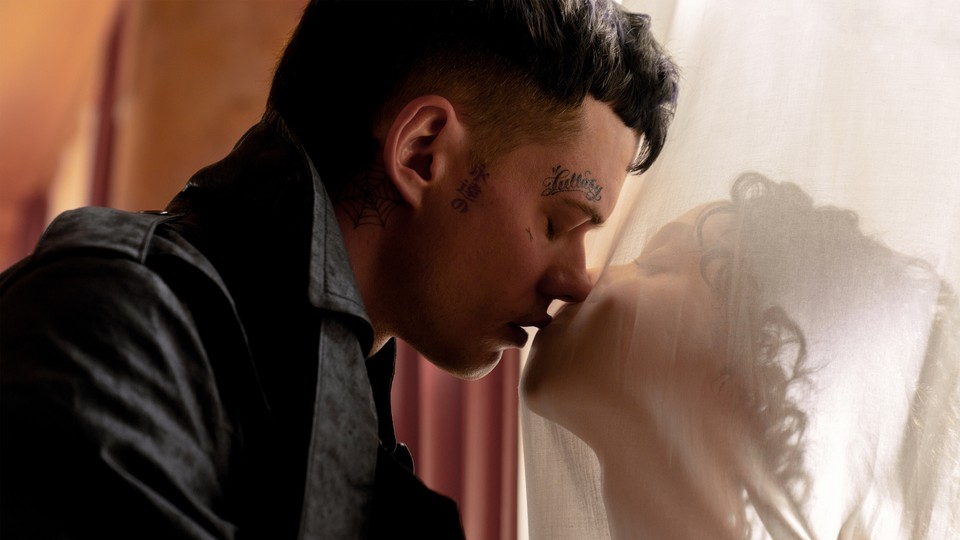The Crow Can’t Justify Its Resurrection
4 min read
The journey to bring The Crow back to life has been as tortured as its immortal antihero. The original 1994 adaptation of the comic-book series, about a man who returns from the dead to hunt down his and his lover’s killers, became a cult classic for its moody tone and grungy noir look. The film also bore the weight of an on-set tragedy: Its star, Brandon Lee, died after being shot by a malfunctioning prop gun. (He’d completed enough work for the movie to be finished in postproduction.) Sequels that followed different men taking on the Crow moniker flopped—and though a potential remake of the first film was announced more than 15 years ago, it seemed to linger in developmental limbo.
Which is where it should have stayed. Directed by Rupert Sanders, who’s made a career of mounting action-heavy, spectacle-driven reimaginings of preexisting material, the new version of The Crow deepens the romance, enhances the violence, and dives further into its protagonist’s supernatural origins. The result, however, is a generic and plodding revenge thriller that’s nowhere near bold enough to justify the franchise’s resurrection.
The 1994 version of The Crow kept things simple: A musician named Eric and his beloved fiancée, Shelly, are killed by a local crime boss after they protest his intentions to evict them from their apartment building. Eric comes back to life thanks to a mystical crow, because—well, he just does, and he begins a murderous rampage to avenge Shelly and himself. The new film concocts a much more elaborate tale, yielding a scattershot narrative that’s more confusing than coherent. Shelly (played by the singer FKA Twigs) has damning video evidence proving the evildoings of a wealthy man named Roeg (Danny Huston), who also happens to have demonic abilities. Eric (Bill Skarsgård), meanwhile, is a sullen, heavily tattooed outcast haunted by memories of his harrowing childhood. Hiding out at a rehab center, Shelly and Eric fall in love over their mutual angst and appreciation for art—he likes to draw and write poetry; she’s a pianist with an angelic voice.
Though Skarsgård and Twigs share an appealingly offbeat chemistry, the film struggles to balance their characters’ sweet romance with the hyper-violent, supernatural conspiracy that leads to Shelly’s death. When Eric fully embraces his powers and begins to slaughter those who wronged him, some of the kills are admirably gross, but many feel especially gratuitous, carried out at the expense of the tenderness and fragility of his courtship of Shelly. At some point, Eric learns he can’t save Shelly without sacrificing himself—but he seems not so much angry or pained as he is excited at the prospect of murdering dozens of nameless henchmen. (During a sequence in which he slices Roeg’s accomplices apart at an opera house, he gleefully tosses two of their severed heads into the terrified audience—an image that looks cool, but is awfully rude.) The ugliness of all this extends to the set pieces too: Eric, when traveling between life and death, heads to a purgatory-like place, but the location amounts to a derelict, CGI-embellished train station indistinct from the drab, rain-soaked, and unnamed city where Eric and Shelly reside.
The original Crow is by no means a perfect film—its dialogue is often corny, its sentimentality heavy-handed—and I don’t believe the comics are so sacred that they can never be adapted again. But Sanders’s vision is just dull. Roeg is a bland, muddily motivated villain. The production design is unremarkable, as is the soundtrack. The more Shelly is seen only through softly lit flashbacks, the more she becomes a collection of tropes rather than an actual character, undercutting the first act’s delicately portrayed love story. That the film is doomed to be compared with the ’90s original is perhaps out of its makers’ control, but they had plenty of opportunity to create something interesting. The source material, by the writer-artist James O’Barr, is a visceral work, with the story of Eric and Shelly underlining how easily grief can turn into an obsession that consequently turns into madness.
Here, O’Barr’s visual details are merely window dressing, like the eye makeup Eric applies with all the enthusiasm of a chaperone at a school dance. Sanders has said that his version of The Crow is not a “Hollywood remake,” and to an extent, he’s right. It’s not a remake of the 1994 film; it’s just another dark and gritty comic-book adaptation in a long line of dark and gritty comic-book adaptations. For The Crow to fly again, the film needed to offer something fresh for today’s audience—something propulsive, audacious, and haunting. All it does, though, is exhume what came before.



